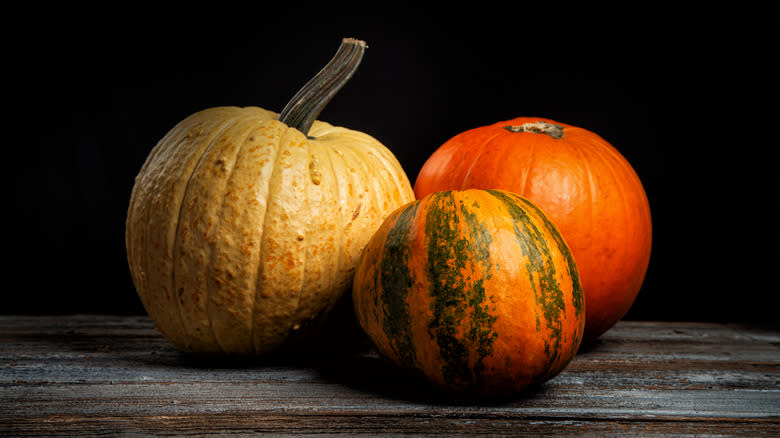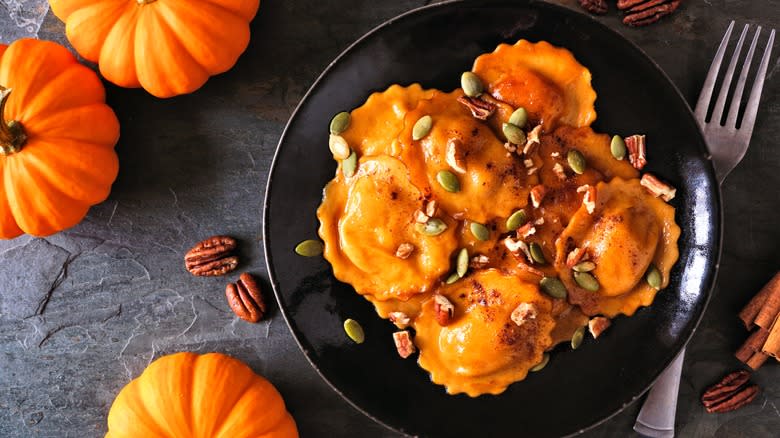Pay Attention To The Stem When Buying A Pumpkin To Cook

Knocking. Shaking. Tapping. Does it sound hollow? Solid? Selecting a pumpkin can be nerve-wracking. That's especially true when you're in the market for a pumpkin to cook rather than carve. The outside shell may be pretty as a picture, worthy of serving as the crown jewel in a seasonal centerpiece. Or it may have just the right lumps and bumps to become the template for a seriously spooky silhouette. But when it comes to choosing a pumpkin to use in a recipe, it's what's going on inside that counts. With pumpkin season in full swing, it's time to get to the meat of the matter.
We have some good news. One of the most reliable ways to select a pumpkin for pie, or any dish, is right in front of your eyes — the stem should be brown, not green, and it should be firmly attached, not loose or wobbly. A green stem signals the pumpkin was picked too soon. A soft or loose stem suggests the pumpkin may be starting to decay. Here's the kicker. Once you zero in on the best pumpkin in the patch, resist the urge to pick it up by its stem for a closer look. The stem may look like a convenient handle, but if the weight of the pumpkin causes the stem to break or gap from the outer shell, you'll be right back to square one.
Read more: 17 Types Of Potatoes And When To Use Them
The Devil's In The Details

Beyond a firmly intact stem, look for a pumpkin that feels heavy for its size. Examine the rind for soft spots or signs that the pumpkin may have been exposed to frost, which can lead to mushy flesh inside. For cooking, avoid pumpkins with cuts or gashes. Even if they occurred in the field and have healed over, the damage makes the pumpkin susceptible to mold that may affect the quality of its meaty interior. An attractive hue is important but not a dealbreaker when it comes to color. The outer shell of a pumpkin dulls over time, but that doesn't necessarily affect the meat inside. In terms of size, pumpkins in the 3-6 pound range will produce filling for about two pies. For reference, 1.5 pounds of fresh pumpkin meat yields the equivalent of a 15-ounce can of pumpkin purée.
It's okay to cook and consume any pumpkin, but for the best results, focus on the sugar pumpkins — sometimes labeled pie or sweet pumpkins. Other varieties suitable for cooking include the Cinderella, Long Island Cheese, New England Pie, and Sweetie Pie. If you're not planning to cook it right away, store a fresh whole pumpkin, without damage or soft spots, in a cool, dark, and dry place. Pumpkin, whether it's raw and cut into cubes or cooked and puréed, is also a good freezer food, so it's totally within reach to serve homemade pumpkin pie on the Fourth of July.
Read the original article on Tasting Table.

